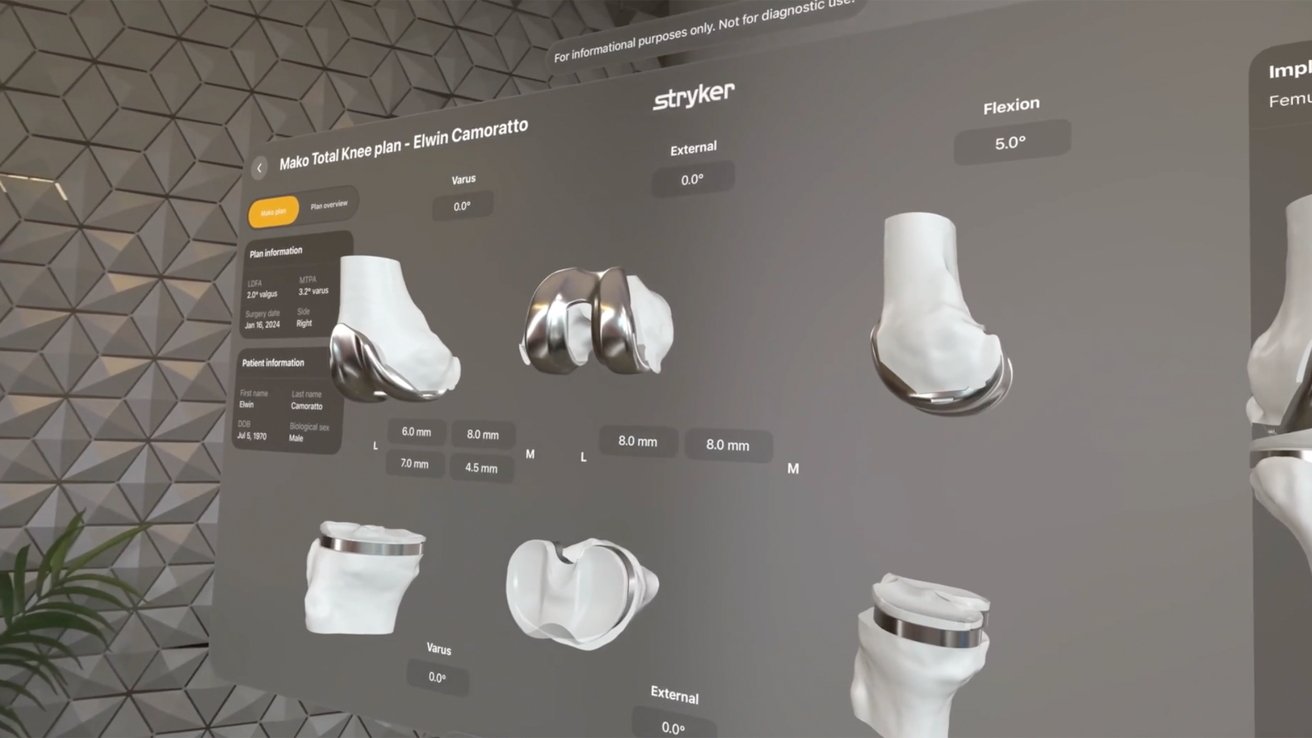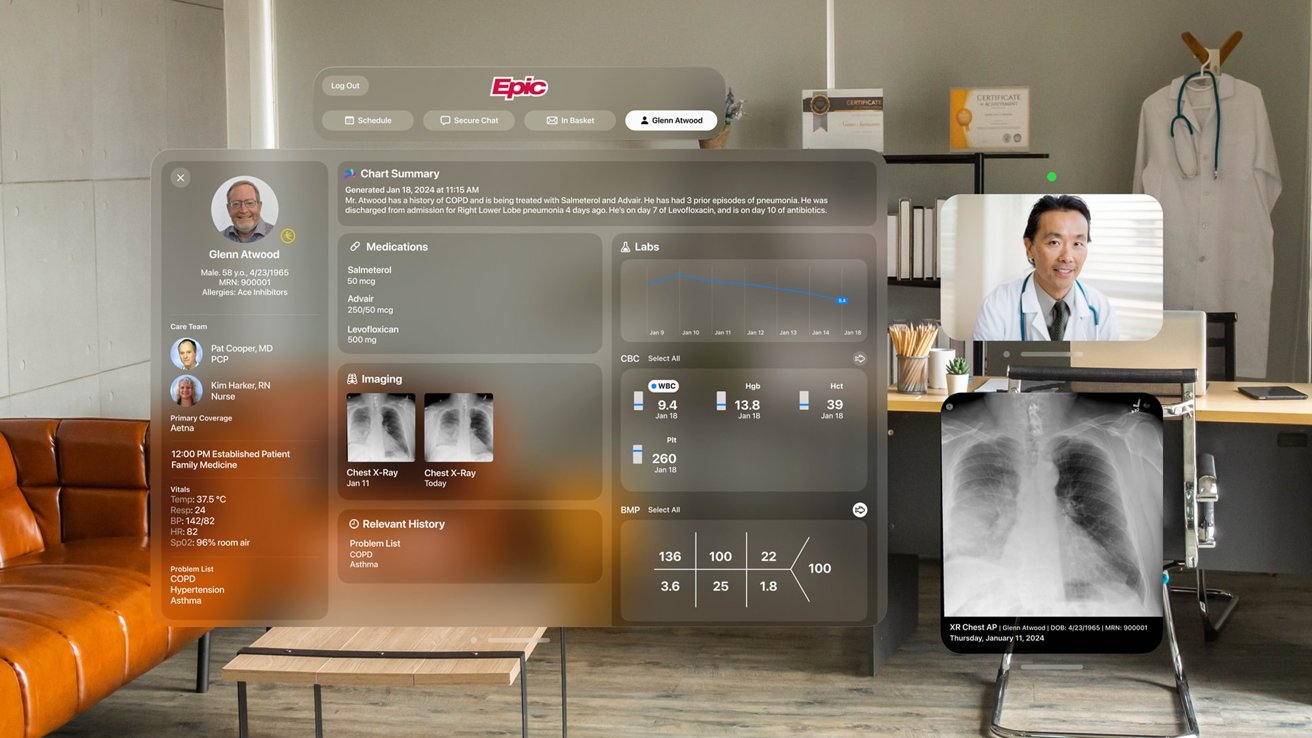Apple Vision Pro gives developers a chance to positively impact the future of healthcare
The Apple Vision Pro could prove useful both in and out of the operating room as developers find new ways to utilize spatial computing.

Image Credit: Apple
In February, Apple launched the Apple Vision Pro, which has caught the attention of healthcare professionals for its potential applications. With this technology, healthcare developers can now create apps that can revolutionize a variety of areas, such as clinical education, surgical planning, training, medical imaging, and behavioral health.
"We're thrilled to see the incredible apps that developers across the healthcare community are bringing to Apple Vision Pro," Apple's vice president of Worldwide Developer Relations, Susan Prescott, said in a press release.
"The imagination and drive of our developers, combined with the technical capabilities of visionOS, are igniting new possibilities for physicians, frontline workers, and even students, and we can't wait to see what's to come."
Stryker, a medical corporation known for its Mako SmartRobotics used in total hip, total knee, and partial knee replacements, is one such company working with the Apple Vision Pro. Its new myMako app allows surgeons to visualize and review patients' Mako surgical plans in an immersive visual experience.
CyranoHealth is another healthcare app making waves on the Apple Vision Pro. It's designed to teach frontline healthcare workers skills related to new equipment, like medical infusion pumps.
Siemens Healthineers has developed an app called Cinematic Reality, which is available on Apple Vision Pro. The app enables users such as surgeons, medical students, and patients to view immersive, interactive holograms of the human body captured through medical scans in their real-world environment.
The app uses Metal and the power of the M2 processor to integrate advanced path-tracing technology, which simulates light interactions with virtual objects. This feature provides realistic lighting and reflections to the user.

Image Credit: Apple
Epic Systems, a health records company, is introducing Epic Spatial Computing Concept for Apple Vision Pro. Physicians and clinicians can use intuitive gestures to complete charting, reviewing labs, secure chatting, and in-basket workflows. They can tap, flick, or type using a virtual keyboard or dictation.
Behavioral health can also benefit from the unique capabilities of the Apple Vision Pro. Xaia uses a trained digital avatar to offer patients AI-enabled, conversational mental health support in relaxing spatial environments where they can also do deep breathing exercises and meditation. Patients can choose to remain in their own locations or transform the environment into something more relaxing, like the beach.
In January, a surgeon who used Google Glass in the operating room was excited for the launch of the Apple Vision Pro, believing the mixed-reality headset could be a great tool for documentation during surgeries.
Apple, for its part, is also excited about the potential use cases of Apple Vision Pro. Apple executive Mike Rockwell has said that the device could be used to help medical professionals manage patient information during surgery.
Read on AppleInsider
